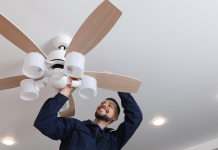Blinds are a versatile and practical window treatment that not only provides privacy but also enhances the aesthetic appeal of a space. They come in various styles, materials, and designs, making them suitable for different settings and preferences. In this comprehensive guide, we will explore the functionality of blinds, delve into the various types available, and discuss some stylish options to elevate your interior design.
I. Understanding the Functionality of Blinds:
Blinds serve multiple purposes, ranging from controlling light and privacy to improving energy efficiency. Here are some key functionalities of blinds:
- Light Control: One of the primary functions of blinds is to regulate the amount of natural light entering a room. Adjustable slats or louvers allow users to customize the level of brightness according to their preferences.
- Privacy: Blinds offer an effective solution for maintaining privacy within a space. By adjusting the angle of the slats, occupants can control the visibility from the outside.
- Energy Efficiency: Certain types of blinds, such as honeycomb or cellular blinds, are designed to enhance energy efficiency by providing insulation. These blinds trap air in their cells, acting as a barrier against heat transfer and helping to maintain a comfortable temperature indoors.
- UV Protection: Blinds can protect furniture, flooring, and other interior elements from the harmful effects of ultraviolet (UV) rays. This feature is particularly important for preserving the longevity and appearance of your furnishings.
II. Exploring Types of Blinds:
- Venetian Blinds:
- These are the most common type of blinds, featuring horizontal slats that can be tilted to control light and privacy.
- Available in a variety of materials, including wood, aluminum, and PVC, to suit different styles and budgets.
- Vertical Blinds:
- Ideal for large windows and sliding doors, vertical blinds have vertical slats that can be adjusted for light control.
- Commonly made from fabric, PVC, or aluminum, offering versatility in design.
- Roller Blinds:
- Simple and sleek, roller blinds consist of a single piece of fabric that can be rolled up or down.
- Popular for their clean look and ease of use.
- Roman Blinds:
- These blinds stack up evenly when raised and create a smooth, elegant appearance when lowered.
- Often made from fabric, providing a soft and luxurious feel.
- Honeycomb/Cellular Blinds:
- Known for their energy-efficient design, these blinds have a cellular structure that traps air, providing insulation.
- Suitable for both light control and maintaining a comfortable indoor temperature.
III. Stylish Options for Blinds:
- Printed and Patterned Blinds:
- Infuse personality into your space with blinds featuring prints, patterns, or bold colors.
- Motorized Blinds:
- Embrace modern technology with motorized blinds that can be controlled with a remote or even through smart home systems.
- Bamboo and Natural Materials:
- For an eco-friendly and rustic look, consider blinds made from bamboo or other natural materials.
- Layered Blinds:
- Combine different types of blinds or shades for a layered and dynamic window treatment.
- Customized Blinds:
- Opt for bespoke blinds tailored to your specific measurements and design preferences for a truly unique touch.
Conclusion:
Blinds are not just functional window coverings; they are an integral part of interior design that can transform the look and feel of a space. By understanding the various types and exploring stylish options, you can choose blinds that not only meet your practical needs but also enhance the overall aesthetic of your home or office. Whether you prefer a classic Venetian blind or a high-tech motorized option, there is a wide range of choices to suit every taste and style.







